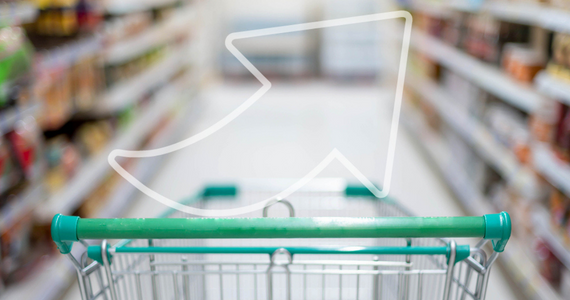With the price of iceberg lettuce peaking at an insane $12, and inflation not letting up any time soon, it’s a good time to review what you can do to reduce your food spend.
If you’ve been wincing at the total on the register at the check-out recently, you’re not alone. Food prices have spiralled due to crops being impacted by floods in New South Wales and Queensland, and more recently Victoria, coupled with the increase in the cost of fuel due to the war in Ukraine.
Groceries are the second biggest expense for Australians – putting food on the table is second only to the cost of putting a roof over our heads.i Given that it’s where a lot of our hard-earned cash goes, anything you can do to manage the rising costs of your food shop will really help your bottom line.
Reduce wastage
The first point of call is to reduce the amount of food you throw away. Each year we waste about one in five bags of groceries or around $2,500 per household per year.ii
Good ways to avoid food waste include planning your shop and even creating meal plans for the week ahead. Before you do a shop – have a look at building on what food you already have in the house. The Foodwise website has a planner that lets you enter the ingredients you already have, selects recipes and assembles a shopping list for any extras you may need.
Keep an eye on what’s in the fridge and be aware of use by dates. You can also use your freezer to extend the life of items if they are getting close to the use-by date and you’re unlikely to use them in time.
Seek out specials
The next step is to reduce the amount you are forking out at the checkout.
While it makes sense to shop around, it can be time-consuming but there are a number of apps you can download to help you easily track down the best deals. Trolley Saver and Half Price compare specials across the major supermarkets and Frugl provides the best bargains at a range of grocery retailers.
It’s also worth looking at retailers like Costco and Aldi who offer cost savings across their brands and products. It’s not just the big retailers though – many smaller discount brands are springing up mimicking the Costco model and charging an annual membership fee to access discounts and special offers so it’s worth keeping your eye out for these.
Shop wisely
Making some tweaks to the way you shop can also trim your grocery spend. One of the classic rules of saving money on your groceries is to never shop on an empty stomach. You’d be surprised how many treats make their way into your trolly when you are famished!
It’s also a good idea to look at the unit price of the items you are buying and consider buying in bulk for cost savings. Also consider substituting fresh produce for tinned or frozen and adjusting your recipes to substitute cheaper produce or cuts of meat. Buying what’s currently in season is usually a good way to save on fruit and veggies.
It’s worth seeing if there are any home brand or plain label alternatives to your usual brands. The home brand of a product is usually very similar to the name brand and is often made by the same manufacturer but retailing for a cheaper price. Your taste buds may not even be able to tell the difference – but your hip pocket will.
While these tweaks might not feel like much when you look at individual products, by the time you fill your trolley they can all add up to significant savings at the checkout.
Grow your own
The price of fresh produce is the main culprit for increases – junk food has only increased 1%, compared to around 5.6% for fruit and veggies.iii,iv But saving on food costs does not mean living on pizza. Why not grow some of your own produce? You don’t need a huge garden – or even to have a garden – many herbs and leafy greens do very well in pots or even on a sunny spot on a countertop.
There are many ways you can save on your food bill and each tiny change you make will add up at the checkout and over time. Given that food inflation seems to be a trend that’s not going away any time soon – it makes sense to start saving today.
ii https://www.dcceew.gov.au/environment/protection/waste/food-waste
Important: This provides general information and hasn’t taken your circumstances into account. It’s important to consider your particular circumstances before deciding what’s right for you. Although the information is from sources considered reliable, we do not guarantee that it is accurate or complete. You should not rely upon it and should seek qualified advice before making any investment decision. Except where liability under any statute cannot be excluded, we do not accept any liability (whether under contract, tort or otherwise) for any resulting loss or damage of the reader or any other person.
Any information provided by the author detailed above is separate and external to our business and our Licensee. Neither our business nor our Licensee takes any responsibility for any action or any service provided by the author. Any links have been provided with permission for information purposes only and will take you to external websites, which are not connected to our company in any way. Note: Our company does not endorse and is not responsible for the accuracy of the contents/information contained within the linked site(s) accessible from this page.





